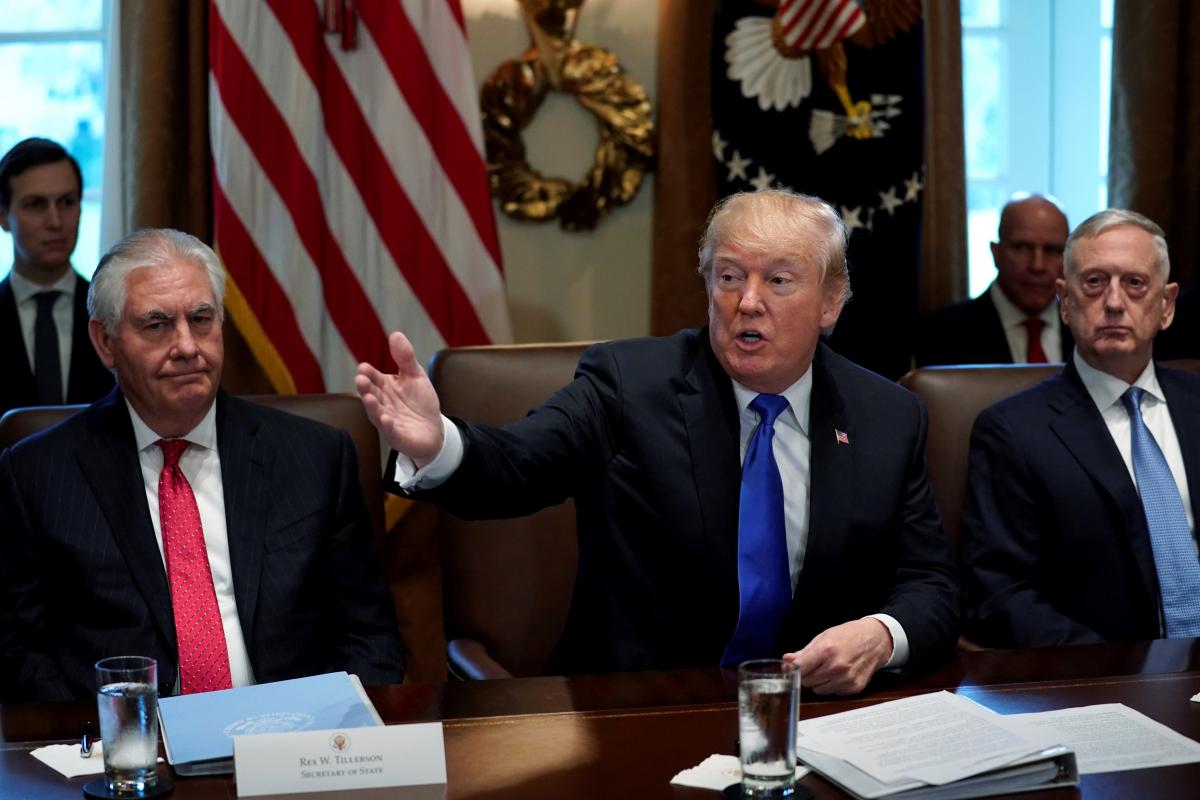MWC News
By Agencies
In a plan that’s unlikely to make it past Congress, Trump seeks to cut funds to UN missions across region and globally.
US President Donald Trump’s administration is seeking to decrease its financial contributions to the Middle East in 2019, most notably to UN missions in Lebanon, the occupied Golan Heights, and Western Sahara.
The plan, revealed on Monday, is unlikely to make it past sceptical politicians in Congress, however.
Douglas Pitkin, the director of the state department’s Bureau of Budget and Planning, told reporters on Monday that “because [the department is] looking for greater cost containment at the UN more generally, [it does] have a lower funding level than the full peacekeeping estimate”.
Pitkin added that these figures are subject to change.
Trump’s plan includes slashing US contributions to the United Nations mission in Lebanon, as well as international peacekeeping missions worldwide.
The Department of State said earlier this week that it seeks a 42 percent cut for the UN Force in Lebanon (UNIFIL), leaving the mission with $84.2m. The UNIFIL was established in 1978, and has been supporting the Lebanese army in maintaining calm in Lebanon’s south, where the country shares a border with Israel.
Cuts made to the UNIFIL may hinder its ability to perform its mandate of maintaining “security and stability in the south along the border with Israel” due to the fighting in neighbouring Syria.
The administration also revealed proposed cuts to missions in at least 10 other countries and regions.
This includes a 55 percent cut to the UN Disengagement Observer Force in the Golan Heights. The administration proposes the force receive $11.1m as opposed to the $24.6m it received in 2017.
In Western Sahara, the Trump administration wants to cut Department of State budget for the UN mission from $18.4m to $8.4m.
Trump had previously called for cuts to UN peacekeeping, including in his budget proposal for last year.
Under pressure from the US, the UN General Assembly voted last year to cut $600m from the body’s $8bn peacekeeping budget.
At the time, US Ambassador to the UN Nikki Haley said, “We’re only getting started.”
According to the Better World Campaign, an organisation working to improve the US-UN partnership, the Trump administration “is proposing unwise and disproportionate cuts to US foreign affairs spending, which would undermine American leadership globally, including at the United Nations and its agencies”.
“The foreign affairs UN-related budget numbers are almost an exact replica of last year’s request, which was widely and wisely dismissed as harmful to US interests abroad,” the organisation said in a statement.
“In fact, over the past year, we have seen military voices, business leaders and leaders in Congress all stress the importance of robust foreign affairs funding and continued support for the UN.”
The suggested cuts are part of a wider proposal that would slash the state department and US Agency for International Development budget by about 25 percent.
The plan is unlikely to make it past Congress, where cuts to diplomatic efforts and other aid programmes face strong opposition.
Trump’s budget plan also increases military spending, while calling for cuts to domestic social programmes.
Prior to revealing his administration’s plan, Trump said he wanted to spend more money at home.
“This will be a big week for infrastructure,” Trump said in a Tweet. “After so stupidly spending $7 trillion in the Middle East, it is now time to start investing in OUR Country!” he added, using a figure on US war expenditure in the region that is often disputed.
This will be a big week for Infrastructure. After so stupidly spending $7 trillion in the Middle East, it is now time to start investing in OUR Country!
— Donald J. Trump (@realDonaldTrump) February 12, 2018
But the administration is requesting Congress approve $686bn Pentagon budget, one of the largest in US history. This includes an $800bn increase in military spending.
According to the Pentagon, the increase is aimed at countering increasing threats from China and Russia.








